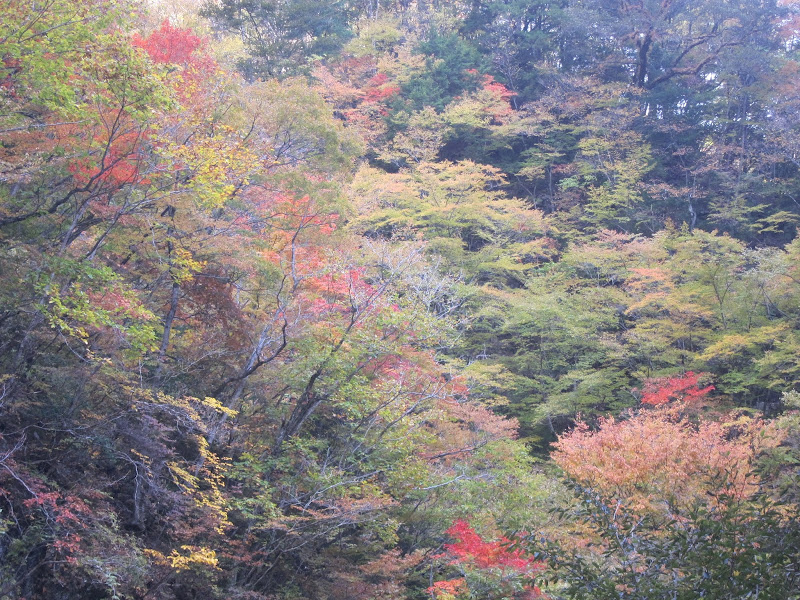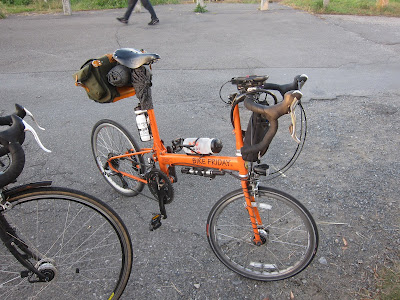
I try to cycle at least 100 km per week, with at least one all day ride (12 hours and more) a month. My latest such trip took me to Nichitsu ghost town, a former mining town set up by Nitchitsu Co Ltd in 1937 and abandoned in the late 1970s. Since May several members of Tokyo Cycling Club (TCC) had been passing through that place. The pictures of it that I found on the web looked very interesting, though I did not fancy looking for the infamous brain in a jar.
A week ago another TCC group went on an autumn leaves viewing tour in the area, but I couldn’t make it. So I decided to go the following weekend, together with my friend Jose, with whom I had done several long rides last winter and spring (including the BRM519 300 km brevet in May).
It turned out to be one of the most beautiful rides of the year, but it was also one of the more challenging ones, because of how mountainous the route was and because of how cold it was already. According to Jose’s Garmin 500 GPS, total climbing on the route was only 7 percent less than at the 300 km brevet around Mt Fuji we rode in May!
Jose and I both wanted an early start and we agreed to meet at 05:30 at the Tamagawa bridge near Yanoguchi station. I got up at 04:00, planning to leave at 05:00, but ran 10 minutes late because I decided to get changed again to be better prepared for the cold and later was glad I did! I changed from my cycling shorts with extra set of tights on top into corduroy pants and long johns. Later on, when descending from a tunnel that is the highest point of the route (elevation: approximately 1250 m), I also wore up to three shirt layers (two short sleeve and one long sleeve sports shirt) plus a wind breaker, a scarf and ski gloves.
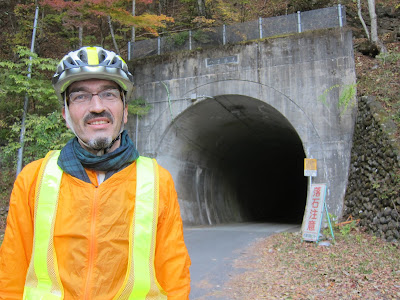
While climbing I stripped down to a short sleeve t-shirt when it was 9° C. At the higher altitudes it was around 3° C and I wore another layer.
The day before the ride I got myself a Carradice Pendle saddle bag for the Brooks saddle on my Bike Friday to carry clothes, bread and the obligatory bananas (hey, you can’t go on a lengthy bike ride without bananas!). The bag was the perfect size for this kind of trip.

After meeting up at the Tamagawa river we cycled along the east bank up to Oume. After a 20 minute stop at the station convenience store we headed off into the mountains, climbing Yamabushi pass and descending into Chichibu via a route recommended by my friend Pete.
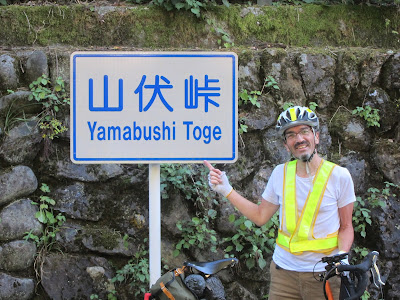
5 1/2 hours after leaving home we arrived at Chichibu where we had a nice 50 minute bakery lunch and coffee at a mall, then set off for the big autumn leaf viewing loop. We encountered plenty of nature, including one deer with big antlers, but fortunately no bears:





The back roads were great, some of them almost totally deserted of cars. At other spots there were many parked cars and people walking around with tripods and fine SLRs to capture the splendid seasonal views.

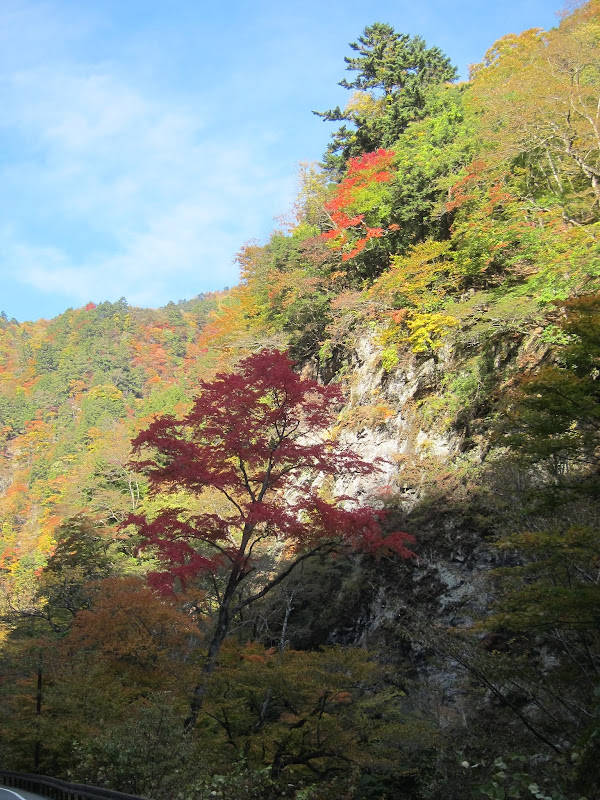


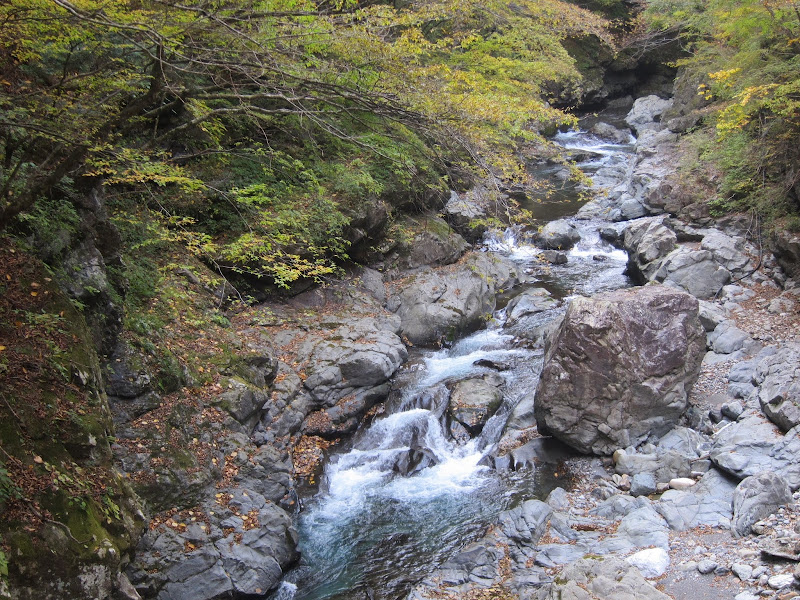
It took us four hours from Chichibu via route 140 and route 210 to Nichitsu and the tunnel above. These are some workers’ dormitories:

This used to be the public bath house:



This is the tunnel at the top of the valley:

The trees became more colourful the higher we climbed. At the top most of them had already shed their leaves. The climbs were maybe as steep as 10 % and did I already mention that it was cold?
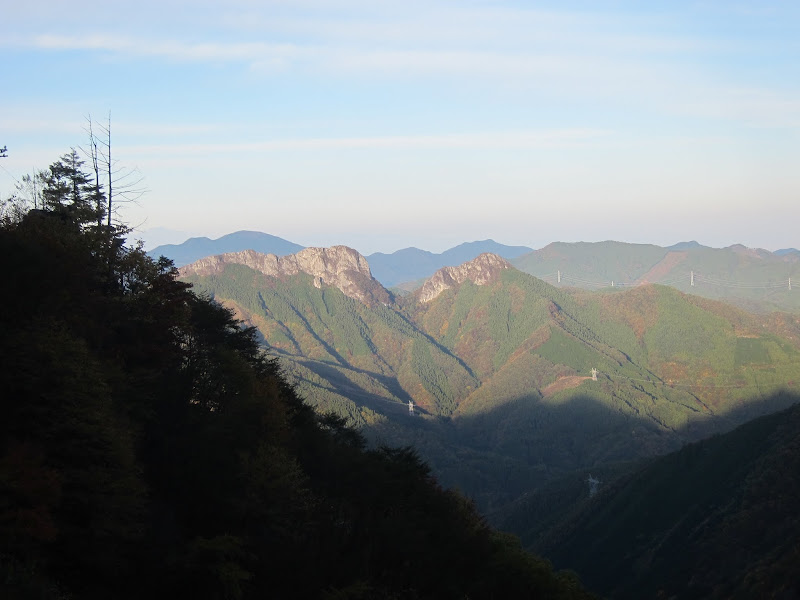
Though we never stopped for very long, we stopped many times for pictures, as these were a main goal of the ride. Thank you for your patience, Jose!

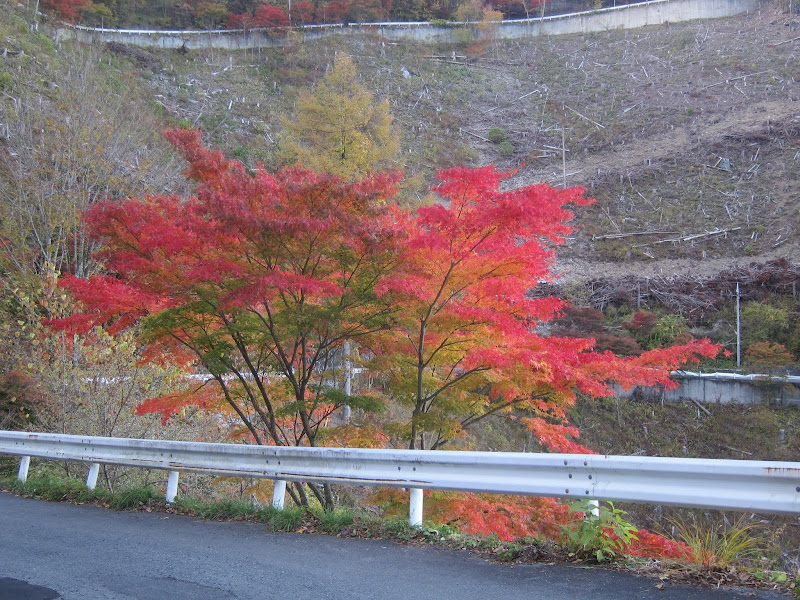
After already riding for an hour in the dark we got back to Chichibu around 18:00. We had just enough time to pack the bikes and get some food before hopping on an express train back over the mountains. We had covered 177 km with over 2400 m of climbing in beautiful countryside. What a great day!
